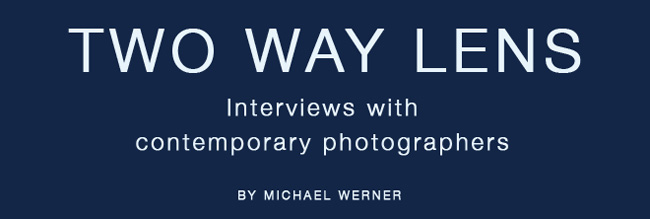MW
What inspired you to start taking photographs, and what is the primary inspiration for you to keep working in this field?
HW
When I was in a high school, I was told by my parents that I must study hard and go to a university. I didn’t want to study. I had a good friend who wanted to become an artist., and he was a painter. I was somewhat influenced by his idea, but I knew I was not good at drawing and I had no other particular artistic talent. So, I thought I would do photography. Photography sounded fun and easy and no hard studying was necessary, I thought. I found the university with 4 year photography course and I was successfully admitted, and that satisfied both my parents’ requirement and my wish of easy life. My father bought me a Minolta 35mm SRL and that was my first camera. I had no prior interest in photography. I played a lot and enjoyed the four years of college life, but somehow I became serious about photography as I studied it. When I graduated, I found a job in the US which happened to be a production company specializing in making commercials for Japan. I thought I would work for the company for a year or two and look for a photography job meanwhile. But one photographer whom I met suggested that I stayed on with the job. He said advertising and filming had much potential while photography had no future. At that time, I was starting a family and I had the responsibility. So, I stayed on with the job and a four years later I started my own production company. After I ran the business for 15 years, one morning, I woke up and all the sudden I decided to become a photographer again. I don’t know why but I had decided. I traveled and built up a portfolio between commercial jobs for 5 years and after that I closed down the business and became a full time photographer. It’s been 10 years since then and I am still a photographer.
MW
In your opinion and experience, how can emerging photographers evaluate themselves as ready to start promoting their works and seek broader exposure for their photographs? What is one vital action you would recommend photographers undertake to find their audience, be included in exhibitions, and gain professional representation?
HW
Obviously, one has to start by showing his/her work, and there are many occasions nowadays—contests, portfolio reviews, grants, etc. I don’t think opportunity is an issue here. There are plenty of chances to be discovered if you are good. So, the question is, “Are you good? “ Simple, easy, and sure way to find out is you. No one can answer this question but yourself. If you aren’t sure if your wok is good, then probably your work is not good enough. Don’t ask somebody else. Instead, hang your work and live with it. If it makes you feel good and proud that you made it, your work is good. If you think, “He will be sorry.” when someone rejected your work, then your work is very good. When you are sure about your work, you are ready to be found.
MW
How did it come about that you achieved the status of successful, professional photographer? What steps were involved in reaching your level of success?
HW
I am not sure if I am successful professional photographer. If “successful professional” means I can live a good, somewhat luxurious, life by the profession, then I am certainly not. I am represented by well-established galleries in New York, Chicago, Santa Fe, Los Angeles, and others, and I sell decent number of work every month. But fine art photography requires a lot of money to produce. I spend a lot for films and prints and also traveling. I work full time 5 days a week and I don’t do anything else. My expenses are almost as high as my photography income and I have so little left at the end even when I am lucky. So, maybe I am not qualified to answer this question. Then why am I doing photography? I think it is a combination of passion and stupidity. For me, photography is intellectual, artistic, and curiosity fulfilling. I love making photographs.
 White Terns, Midway Atoll, from the series American Studies
White Terns, Midway Atoll, from the series American Studies









